Imagine you’re climbing a mountain, but instead of relying solely on your guide, you’ve got a team spotting you from every angle. That’s what 360-degree feedback feels like for your career—it’s not just your manager’s input anymore but a full-circle view that drives real growth.
As someone who’s spent over two decades in HR and performance management, I’ve seen how this approach transforms employee development.
It’s more than a feedback tool; it’s a game plan for success.
Curious about delivering truly comprehensive feedback? This guide is packed with practical 360-degree feedback examples, actionable best practices, and pros and cons to help you master it.
Let’s dive in!
What Is a 360-Degree Feedback Performance Review for Employees?
A 360-degree feedback performance review is a comprehensive evaluation process where employees receive feedback from multiple sources, including peers, managers, subordinates, and sometimes clients.
This approach provides a well-rounded perspective on an individual’s strengths and areas for improvement rather than relying solely on input from a direct supervisor.
For instance, a team leader might learn they excel in motivating their team but must work on written communication skills. This feedback aims to foster personal and professional growth by offering diverse insights, promoting self-awareness, and supporting development in key performance areas.
Let’s check out some 360 review examples to understand the concept better.
35+ Examples of 360-Degree Employee Performance Feedback
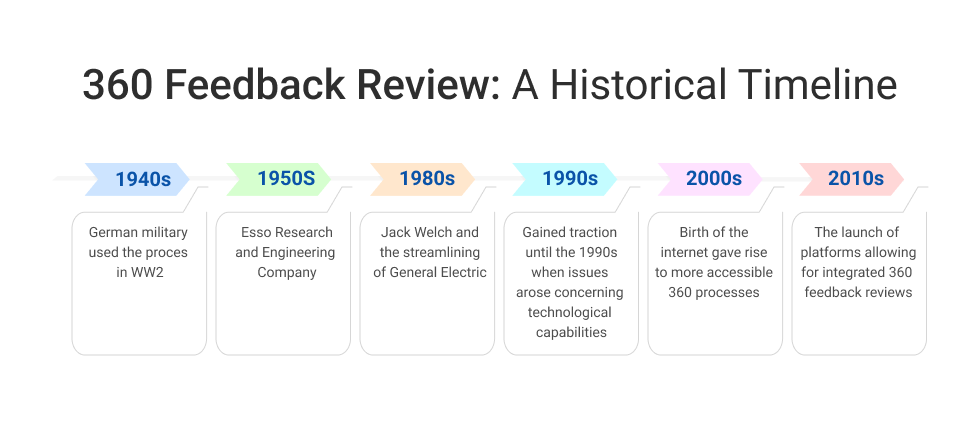
Here are some 360-degree feedback examples in different scenarios:
1. Feedback on Communication Skills
Example 1: “You consistently ensure team members feel heard by encouraging open discussions in meetings.”
Purpose: This feedback acknowledges the employee’s ability to create an open and inclusive environment, which fosters collaboration and ensures diverse perspectives are considered in team discussions.
Example 2: “Sometimes, when giving instructions, clarity can be improved to avoid misinterpretations.”
Purpose: By highlighting the importance of clarity, this feedback helps the employee refine their communication style to ensure instructions are easily understood and executed correctly by team members.
2. Feedback on Teamwork
Example 1: “You excel at resolving conflicts within the team by mediating calmly and respectfully.”
Purpose: This 360 performance review feedback example recognizes the employee’s skill in managing conflicts effectively, promoting a harmonious work environment where challenges are addressed constructively without disrupting team productivity.
Example 2: “Consider seeking input from quieter team members during discussions to promote broader participation.”
Purpose: By encouraging inclusivity, this feedback emphasizes the value of involving all team members in discussions, fostering diverse ideas and empowering quieter colleagues to contribute.
3. Feedback on Leadership
Example 1: “You’ve demonstrated strong leadership by setting clear goals and ensuring alignment across the team.”
Purpose: This feedback reinforces the employee’s ability to guide the team with clear objectives, which ensures everyone remains focused and aligned toward achieving organizational goals.
Example 2: “It would be helpful if you could delegate tasks more often to empower team members.”
Purpose: It encourages the employee to delegate responsibilities more effectively, helping to build trust and confidence among team members while lightening their own workload.
4. Feedback on Problem-Solving
Example 1: “You quickly identify project bottlenecks and propose actionable solutions, keeping the team on track.”
Purpose: This feedback highlights the employee’s ability to foresee and address challenges proactively, ensuring projects remain on schedule and team productivity is not compromised.
Example 2: “Sometimes, involving others in brainstorming sessions could lead to more creative solutions.”
Purpose: This feedback encourages the employee to embrace collaborative problem-solving, leveraging the diverse ideas and perspectives of the team for better and more innovative outcomes.
5. Feedback on Time Management
Example 1: “You have a talent for balancing multiple deadlines without compromising quality.”
Purpose: Such feedback reinforces the employee’s effective time-management skills, emphasizing their ability to handle competing priorities and deliver high-quality results consistently.
Example 2: “Prioritizing high-impact tasks first could help you avoid last-minute rushes on critical deadlines.”
Purpose: This is one of the constructive 360 feedback examples where feedback focuses on improving prioritization, helping the employee allocate their time to the most impactful tasks, and reducing stress caused by last-minute deadlines.
6. Feedback on Innovation
Example 1: “Your ideas in the last brainstorming session were fresh and actionable, inspiring the team.”
Purpose: This feedback emphasizes the employee’s ability to contribute innovative and practical ideas, showcasing their impact on fostering creativity and driving team motivation.
Example 2: “Exploring new industry trends could help you bring even more innovative solutions to the table.”
Purpose: By suggesting ongoing learning, this feedback encourages the employee to stay informed on industry advancements, enhancing their ability to introduce forward-thinking solutions that benefit the organization.
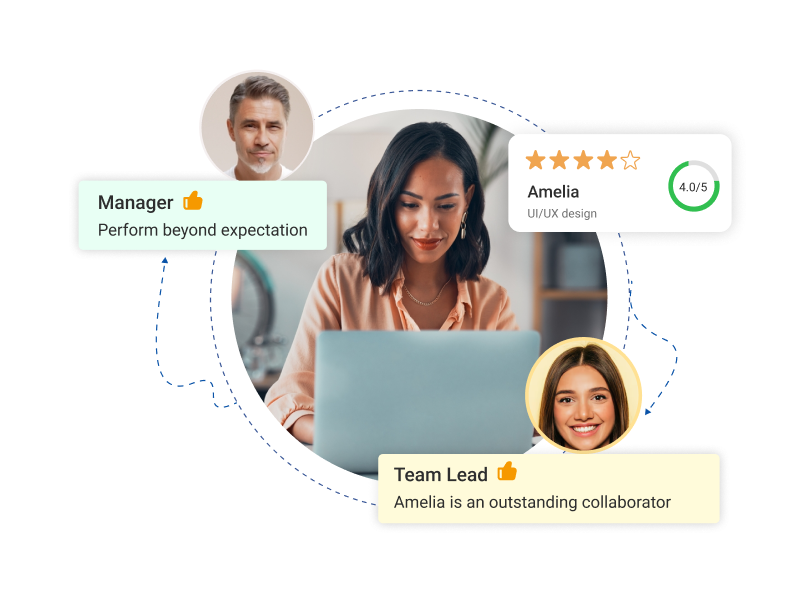
7. Feedback on Work Quality
Example 1: “Your reports are consistently detailed and free of errors, making them a reliable resource.”
Purpose: This feedback highlights the employee’s commitment to producing high-quality, accurate work, which is instrumental in supporting informed decision-making within the organization.
Example 2: “Proofreading your work one extra time could improve clarity and reduce minor errors.”
Purpose: It encourages attention to detail, reinforcing the importance of refining work for better accuracy and professional presentation.
8. Feedback on Adaptability
Example 1: “You embrace change quickly and help others adjust, which keeps the team moving forward.”
Purpose: This feedback recognizes the employee’s adaptability, emphasizing their role in maintaining team momentum and minimizing disruption during transitions or organizational changes.
Example 2: “Sometimes, taking a moment to assess the implications of change before acting can be beneficial.”
Purpose: By suggesting a more reflective approach, this feedback helps the employee balance quick adaptability with strategic decision-making to achieve better outcomes.
9. Feedback on Emotional Intelligence
Example 1: “You show empathy when colleagues face challenges, fostering a supportive workplace.”
Purpose: This feedback acknowledges the employee’s ability to demonstrate empathy, which strengthens workplace relationships and builds a culture of trust and mutual support.
Example 2: “Working on managing frustration during high-pressure situations could improve team dynamics further.”
Purpose: This constructive feedback encourages the employee to develop emotional regulation skills, ensuring a calm and positive environment even in stressful situations.
10. Feedback on Initiative
Example 1: “You proactively take on additional responsibilities, which inspires others to step up as well.”
Purpose: This feedback emphasizes the employee’s proactive attitude, showcasing their leadership potential and ability to motivate others by setting an example.
Example 2: “Balancing enthusiasm with strategic planning can help ensure initiatives are fully realized.”
Purpose: This feedback highlights the need for careful planning, ensuring the employee’s proactive efforts are well-structured and deliver lasting value.
11. Feedback on Collaboration
Example 1: “Your willingness to share knowledge strengthens the team’s overall capabilities.”
Purpose: This feedback recognizes the employee’s contribution to team growth, emphasizing the importance of knowledge-sharing in building collective skills and expertise.
Example 2: “Sometimes, actively seeking input from others could enhance collaboration further.”
Purpose: Encouraging mutual engagement highlights the value of diverse contributions, fostering stronger collaboration and more inclusive teamwork.
12. Feedback on Customer Focus
Example 1: “Your attention to detail in understanding customer needs ensures satisfaction and loyalty.”
Purpose: It acknowledges the employee’s ability to meet and exceed customer expectations, highlighting the critical role they play in maintaining strong client relationships.
Example 2: “Anticipating customer needs more proactively could further enhance client experiences.”
Purpose: This feedback emphasizes the importance of foresight, encouraging the employee to take a proactive approach to address customer needs before they arise.
13. Feedback on Technical Skills
Example 1: “You have a solid grasp of technical tools and effectively teach others to use them.”
Purpose: This feedback highlights the employee’s technical expertise and their ability to empower colleagues, strengthening team productivity and efficiency.
Example 2: “Continuing to upskill in emerging technologies could keep your expertise relevant.”
Purpose: Such feedback underscores the importance of ongoing learning, encouraging the employee to remain competitive and adaptable to technological advancements.
14. Feedback on Creativity
Example 1: “Your ability to think outside the box has led to innovative solutions for complex projects.”
Purpose: This feedback acknowledges the employee’s creative thinking and its impact on solving challenging problems, driving success in complex projects.
Example 2: “Balancing creativity with feasibility could make your ideas even more impactful.”
Purpose: This feedback encourages the employee to align their creativity with practical implementation, ensuring their innovative ideas result in tangible outcomes.
15. Feedback on Accountability
Example 1: “You consistently take ownership of tasks, even when challenges arise.”
Purpose: This feedback reinforces the employee’s reliability and commitment to seeing tasks through, even in difficult circumstances, which builds trust within the team.
Example 2: “Seeking feedback on completed tasks could help you refine your approach further.”
Purpose: By encouraging reflective practices, this feedback supports the employee’s growth and continuous improvement in task execution.
16. Feedback on Conflict Management
Example 1: “Your calm approach to addressing disagreements keeps the team focused on solutions.”
Purpose: This feedback highlights the employee’s ability to manage conflicts effectively, ensuring disputes are resolved constructively without disrupting team dynamics.
Example 2: “Being more assertive when mediating could help resolve issues more decisively.”
Purpose: Encouraging balanced assertiveness helps the employee address conflicts with greater confidence, leading to faster and more effective resolutions.
17. Feedback on Decision-Making
Example 1: “Your ability to weigh pros and cons quickly ensures timely and effective decisions.”
Purpose: This feedback acknowledges the employee’s sound decision-making skills, which are crucial for maintaining productivity and achieving business objectives.
Example 2: “Involving others in decision-making could help uncover alternative perspectives.”
Purpose: By encouraging inclusive decision-making, this feedback highlights the value of collaboration in making well-rounded and informed choices.
18. Feedback on Dependability
Example 1: “You consistently meet deadlines and deliver on promises, building trust with colleagues.”
Purpose: This feedback recognizes the employee’s reliability, emphasizing their role in fostering a dependable and trustworthy team culture.
Example 2: “Providing updates on long-term tasks could further strengthen trust and transparency.”
Purpose: This feedback highlights the importance of proactive communication, ensuring stakeholders remain informed and aligned.
19. Feedback on Goal-Setting
Example 1: “You set realistic goals and work diligently to achieve them, motivating the team to follow suit.”
Purpose: This feedback highlights the employee’s ability to inspire and guide the team through effective goal-setting and dedicated execution.
Example 2: “Stretching your goals occasionally could help you unlock even greater potential.”
Purpose: By suggesting ambitious goal-setting, this feedback encourages the employee to push their limits and realize untapped potential.
20. Feedback on Organizational Skills
Example 1: “Your ability to organize tasks ensures projects run smoothly and on schedule.”
Purpose: This feedback emphasizes the employee’s organizational skills, which are vital for maintaining efficiency and ensuring project success.
Example 2: “Documenting processes could make it easier for others to follow your organizational methods.”
Purpose: This feedback promotes process documentation, enabling smoother collaboration and consistent practices across the team.
How to Implement 360-Degree Feedback
Implementing a 360-degree feedback system effectively involves thoughtful planning, proper communication, and consistent follow-up. Below is a detailed and actionable guide:
Step 1: Define Your Objectives
Key Actions:
- Identify the primary goals of the system: Decide if the focus is developmental (helping employees grow), evaluative (integrating into performance reviews), or cultural (promoting transparency and feedback culture).
- Engage stakeholders: Discuss the objectives with HR, managers, and employees to ensure alignment and clarity.
- Link to organizational goals: Clearly map out how the feedback process aligns with broader business outcomes, such as improved collaboration or leadership development.
Outcome: You establish a well-defined purpose for 360-degree feedback, ensuring everyone understands why it is being implemented and how it fits within the larger organizational framework.
| Pro Tip: Clearly communicate the why behind 360-degree feedback from the start to prevent misunderstandings or resistance. |
Step 2: Gain Leadership Buy-In
Key Actions:
- Educate leaders about the benefits: Share how 360-degree feedback supports leadership growth, employee engagement, and business success.
- Address potential concerns proactively: Be ready to discuss issues like confidentiality, time investment, and misinterpretation of results, providing examples of how these challenges will be managed.
- Request their role as champions: Encourage leaders to model openness to feedback by participating in the pilot program or sharing their experiences.
Outcome: Leadership supports the initiative fully, championing the system to employees and allocating the necessary resources for successful implementation.
| Pro Tip: Position leadership participation as a key signal of commitment, encouraging employees to trust the process. |
Step 3: Design the Feedback Framework
Key Actions:
- Determine participants: Identify whether the system will be rolled out to the entire organization, specific teams, or leadership levels.
- Define feedback sources: Decide who will provide feedback (e.g., peers, direct reports, managers, customers) and ensure a balance between breadth and relevance.
- Establish evaluation criteria: Collaborate with HR and managers to develop clear, role-specific criteria, such as teamwork, communication, and decision-making.
- Decide on anonymity: Make anonymity a core feature to encourage honest, unbiased responses.
Outcome: A clear framework that outlines who is involved, what will be evaluated, and how feedback will be gathered, ensuring relevance and fairness.
| Pro Tip: Use job-specific competencies to tailor feedback criteria, making the results actionable and meaningful. |
Step 4: Select Feedback Tools and Platforms
Key Actions:
- Research available tools: You can check out online tools like PeopleGoal for features such as customizable surveys, automated reporting, and data security.
- Ensure usability and accessibility: Choose a system that is intuitive for all participants, including those less tech-savvy.
- Test for anonymity and confidentiality: Prioritize tools that guarantee feedback anonymity to foster trust in the process.
- Integrate with existing systems: Check for compatibility with your current HR tools to streamline data management.
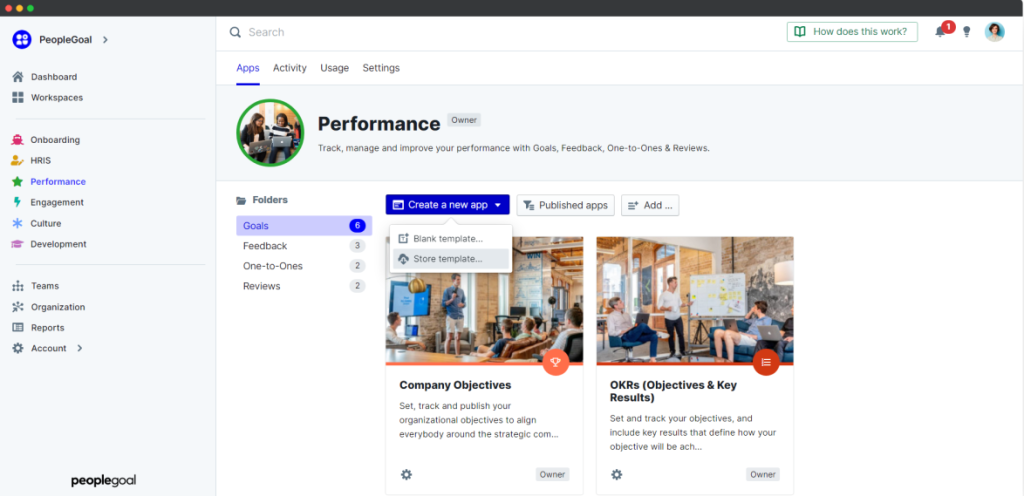
Outcome: A user-friendly and secure feedback platform that ensures smooth data collection, protects anonymity, and integrates well with current systems.
| Pro Tip: Pilot the tool with a small team to identify usability issues and gather suggestions for improvement before full implementation. |
Step 5: Train Participants
Key Actions:
- Provide role-specific training: Teach reviewers how to give constructive, unbiased feedback and recipients how to interpret and act on feedback.
- Set clear expectations: Explain the feedback process, timelines, and how results will be used to review all participants.
- Address cultural barriers: If feedback isn’t a norm in your organization, educate employees on its benefits and importance for growth.
Outcome: A well-prepared workforce that understands their roles in the process, increasing the likelihood of actionable and meaningful feedback.
| Pro Tip: Use real-life examples during training to demonstrate effective feedback and avoid generic or vague comments. |
Step 6: Conduct a Pilot Program
Key Actions:
- Choose a representative group: Select participants from different levels or departments to simulate the full-scale rollout.
- Monitor feedback quality and engagement: Analyze if feedback is clear, actionable, and provided on time.
- Collect participant insights: Ask pilot participants about their experience to identify areas for improvement in the process or platform.
Outcome: A refined system based on real-world data and feedback, ensuring smoother implementation on a larger scale.
| Pro Tip: Use lessons learned from the pilot to create a troubleshooting guide for the full rollout. |
Step 7: Roll Out the Program
Key Actions:
- Launch with clear communication: Share the purpose, process, and timeline with the entire organization.
- Provide ongoing support: Assign HR or project leads to answer questions and troubleshoot issues during the rollout.
- Monitor participation rates: Track who has completed their feedback to ensure full compliance and follow up with reminders.
Outcome: A smooth organization-wide launch that minimizes confusion and ensures consistent participation.
| Pro Tip: Pair the rollout with a company-wide meeting or town hall to reinforce leadership’s commitment and answer any last-minute concerns. |
Step 8: Analyze and Share Results
Key Actions:
- Compile individual feedback reports: Aggregate and anonymize feedback, ensuring clarity and relevance for each recipient.
- Highlight key strengths and improvement areas: Make sure the feedback is constructive and focused on actionable insights.
- Share feedback appropriately: Conduct one-on-one sessions with employees to discuss their reports in a confidential setting.
Outcome: Employees receive actionable and balanced insights, helping them understand their strengths and development needs.
| Pro Tip: Use visuals like charts or graphs in reports to help employees quickly grasp trends in their feedback. |
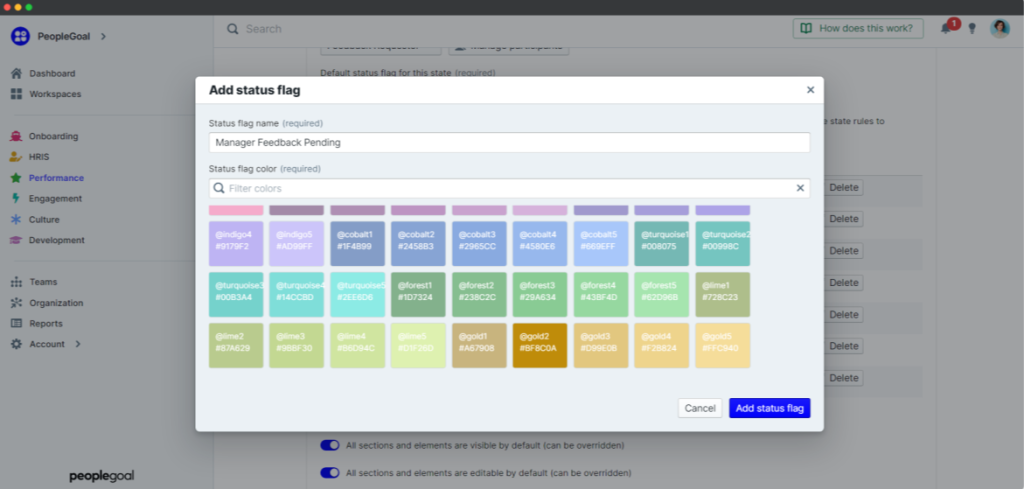
Step 9: Create Development Plans
Key Actions:
- Collaborate on action plans: Work with employees to set achievable, measurable goals based on their feedback.
- Provide resources and support: Offer training, mentorship, or coaching tailored to the individual’s needs.
- Establish check-ins: Set regular follow-up meetings to review progress and adjust goals as needed.
Outcome: Employees feel supported in their growth journey, and the organization sees measurable improvements in skills and performance.
| Pro Tip: Link individual development plans to team and organizational goals to demonstrate broader impact. |
Step 10: Evaluate and Refine the Process
Key Actions:
- Gather feedback on the process: Conduct surveys or focus groups to identify areas for improvement in the system.
- Analyze impact: Measure how the feedback system influences performance, engagement, and culture.
- Adjust as needed: Update tools, criteria, or processes based on participant input and organizational changes.
Outcome: A continuously improving 360-degree feedback system that stays relevant and effective over time.
| Pro Tip: Schedule annual evaluations of the system to ensure it evolves with organizational priorities and employee needs. |
Pros of Employee 360-Degree Feedback
- Comprehensive Evaluation: Collecting feedback from multiple sources, such as managers, peers, subordinates, and sometimes clients, provides a well-rounded view of an employee’s performance, eliminating bias from a single perspective.
- Promotes Self-Awareness: Employees gain insights into how others perceive their strengths and areas for improvement, helping them understand their impact on the team and organization.
- Encourages Collaboration and Communication: The process fosters a culture of openness and constructive dialogue as employees become more aware of how their behavior affects others.
- Identifies Skill Gaps and Development Areas: The detailed feedback highlights specific competencies that need improvement, making it easier to tailor training and development programs.
- Boosts Employee Engagement: Feeling valued through diverse feedback can enhance morale and motivate employees to perform better, knowing their input and performance are acknowledged.
Cons of Employee 360-Degree Feedback
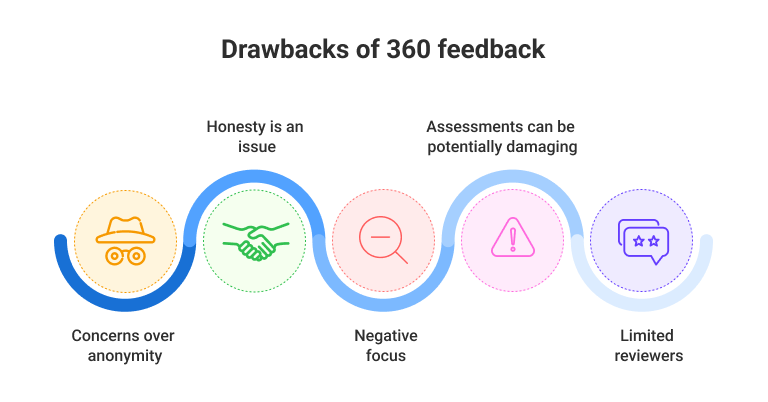
- Challenges in Ensuring Anonymity: While anonymity is a goal, maintaining it can be tricky. Employees may feel hesitant to share feedback if they suspect their identity might be inferred.
- Emphasis on Areas for Improvement: 360-degree feedback often highlights areas needing growth. Without balance, employees might perceive it as overly critical, potentially overshadowing their strengths and achievements.
- Limited Participation from Reviewers: Feedback quality depends on diverse input. If reviewers are few or unengaged, the results might not fully represent an employee’s performance or contributions across different teams or contexts.
- Potential Bias in Feedback: Honesty can vary in feedback, with some comments being overly positive or critical. This variability might stem from personal biases, impacting the overall fairness of the assessment.
- Impact on Employee Confidence: Feedback can sometimes unintentionally demotivate if not framed constructively. Miscommunication or overly critical points might affect an employee’s confidence or sense of value in the workplace.
What Are the Best Practices for Employee 360-Degree Feedback?
Some of the best practices that deliver great results during employee 360-degree feedback are as follows:
1. Tailor Questions to Each Role
Generic feedback forms don’t cut it. Customize questions to align with each role’s unique demands. For instance, evaluate a manager’s ability to handle conflicts or a team member’s collaboration skills. This tailored approach ensures feedback is precise and actionable.
2. Focus on Behavioral Impact
Instead of sticking to ratings, ask reviewers to share how specific behaviors have impacted their work or the team. For example, “How has Alex’s communication style influenced project timelines?” This uncovers deeper, more valuable insights.
3. Include Upward Feedback for Executives
Feedback isn’t just for team members—leaders need it, too. Encourage employees to provide anonymous feedback for executives. It can highlight critical leadership gaps that may otherwise go unnoticed.
4. Balance Qualitative and Quantitative Feedback
Don’t rely solely on numbers. Combine them with open-ended questions like, “What’s one thing this person could do to elevate their performance?” This creates a richer, more balanced picture.
5. Segment Feedback by Themes
After gathering responses, categorize feedback into themes such as communication, leadership, and technical expertise. This helps employees identify patterns without feeling overwhelmed by details.
6. Include Self-Reflection as a Core Component
Ask employees to assess themselves using the same criteria before receiving feedback. This comparison between self-perception and peer input often fosters more meaningful reflection.
7. Offer Feedback Training
Constructive feedback is a skill worth developing. Train participants to phrase their comments thoughtfully, focusing on observations and impacts rather than vague statements. It creates a more respectful and productive process.
8. Limit Feedback Fatigue
Avoid overwhelming employees by overloading them with feedback sessions. Conduct these reviews at manageable intervals—perhaps twice a year—and keep the process concise and focused.
9. Provide Post-Feedback Coaching
Feedback should lead to growth, not confusion. Pair employees with mentors or coaches who can help translate the input into clear, actionable steps.
10. Encourage Reverse Feedback
Allow employees to provide feedback on the 360-degree process itself. Did it meet their expectations? Was it helpful? This two-way dialogue can improve the system and build trust.
11. Create Feedback Norms
Normalize open feedback in everyday interactions. For instance, after team meetings, ask, “What could I have done better?” This builds a culture of continuous improvement.
12. Account for Cultural Sensitivities
If your team spans diverse cultural backgrounds, remember that feedback is perceived differently across cultures. Adapt the process to be inclusive and considerate, ensuring everyone feels respected and valued.
Unlock Employee Performance Potential With 360-Degree Feedback
If you wish to unlock true employee performance potential, you must understand perspectives from all angles. 360-degree feedback fosters growth by providing a comprehensive view of strengths and areas for improvement. Using this approach, organizations empower employees with actionable insights, enhancing collaboration and overall performance.
You can use a good tool like PeopleGoal that ensures comprehensive, 360-degree feedback with customizable templates, automated workflows, and advanced reporting. These features streamline feedback collection and provide clear, actionable data to support meaningful development conversations.
With such a tool, organizations can truly harness the power of feedback to build a culture of continuous growth and high performance.
Learn More About 360-Degree Feedback
What is the difference between 360 feedback and performance review?
360 feedback gathers input from multiple sources—managers, peers, subordinates, and sometimes clients—focusing on an individual’s skills, behaviors, and impact on others. Performance reviews, on the other hand, are usually one-on-one evaluations between a manager and employee, emphasizing goal achievement, productivity, and job performance. 360 feedback is holistic, while performance reviews are role-specific and goal-driven.
What is the difference between 360 feedback and peer review?
As mentioned above, 360 feedback includes perspectives from multiple sources, such as managers, peers, direct reports, and more, to assess a person’s overall impact. Peer reviews are narrower, focusing only on feedback from colleagues at the same organizational level. While 360 feedback is comprehensive and covers various relationships, peer reviews highlight collaboration and teamwork, specifically among equals.
Ready to 3x Your Teams' Performance?
Use the best performance management software to align goals, track progress, and boost employee engagement.
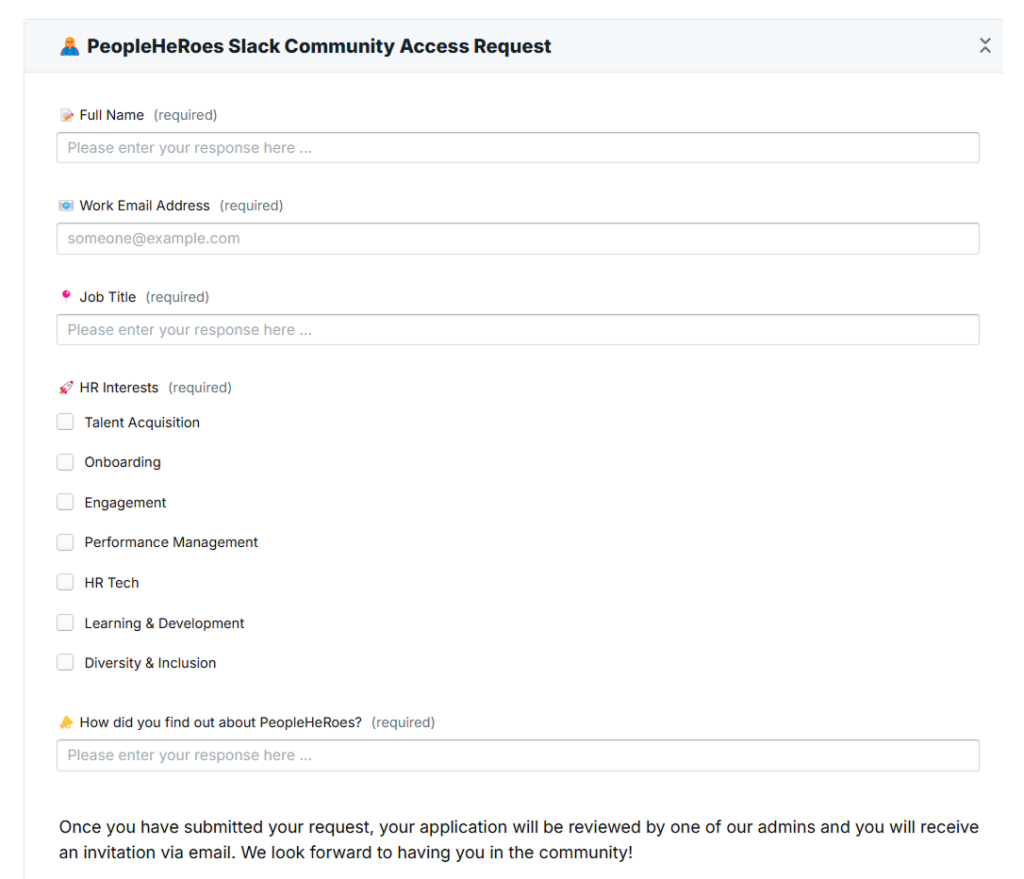

![What Is EPM Software? [Detailed Guide + Best Tools]](https://www.peoplegoal.com/blog/wp-content/uploads/2025/03/New_enterprise-performance-management-software.png)
![A Detailed Guide on Employee 360 Feedback Software [+List of Tools]](https://www.peoplegoal.com/blog/wp-content/uploads/2025/02/Best-360-Feedback-Software_.png)

